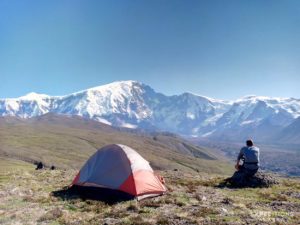Boating Stuff
Personal Flotation Devices, or “buoyancy aids” are critical. They’re no longer called lifejackets or life vests. They’re called Personal Flotation Devices. PFDs. Think about that for a while.
You need one per person, and you need to fit and to wear them. Every time you and your boat get in the water.
Every. Single. Time.
Your boat should come with a spray deck, or spray skirt. I generally don’t worry about a helmet for most Alaska sea kayaking, but if you pan on running the surf and so on, put one on. If you plan on a big open water expedition, consider a bilge pump amongst your gear,. At the very least have a sponge or 2 handy. If you have room, some form of flotation for your sea kayak, such as air bags.
You’ll definitely want dry bags, and for longer more adventurous trips, the more the better. A deck bag or water proof fanny pack for the gear you keep outside the boat (camera, compass, maps, etc). Just be sure to secure it safely to the boat, and somewhere that it won’t interfere with your paddling.
Clothing
Dry suits or wet suits are great, and definitely recommended for expedition trips. For a 2-4 hour daytrip, with a guide, etc, you might only go with a splash jacket, and capilene layers. Generally, you will want to dress for the water temperature, not the ambient air temperature.
If it’s chilly have some kind of fleece handy. Powerstretch fleece is probably the best, if you can find it. So a drysuit or wetsuit is recommended. Neoprene booties and gloves, sunglasses, hat, lip balm, sunscreen. Camping clothes and something comfortable to hike in.
Don’t wear your sandals as your footwear in the sea kayak. They can restrict an exit in an emergency. Booties are the way to go.
More stuff
Bring a first aid kit. Bring some form of towline with a quick release system. Communication device, such as a sat phone (NOT a cell phone), Spot Messenger, VHF Radio, etc. Bring a repair kit as well. Even a roll of duct tape and a roll of Tyvek tape (you can find it at Lowe’s) comes in handy, along with a Leatherman type tool, or pliers and a screwdriver, and a tube of Aquaseal.
I won’t go into detail about camping gear. It’ll depend almost completely on your trip type, but you should plan on bringing some kind of shelter provisions even on short daytrips. Because ya just never know.
Bring dry bags. Plenty of dry bags.



